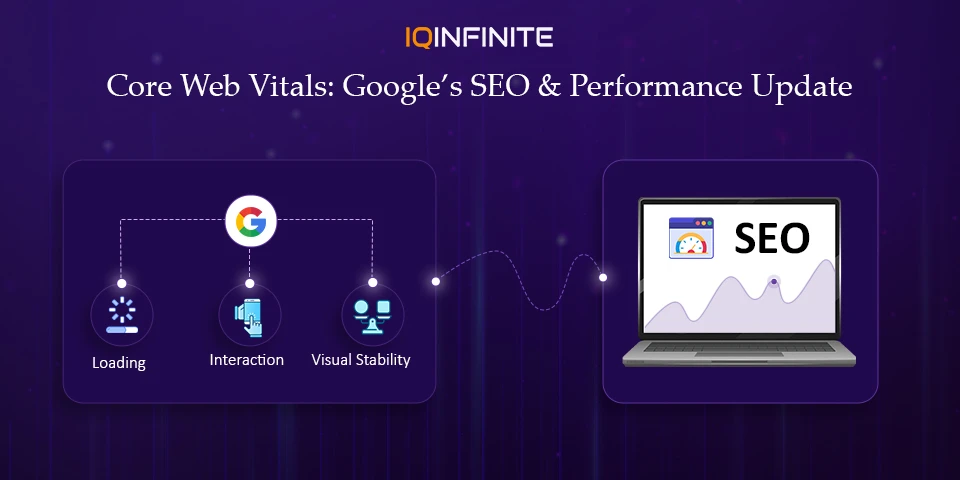Core Web Vitals Update: How Google’s Latest Changes Transform Web Performance and SEO

Google’s Core Web Vitals are evolving faster than ever and the latest updates are transforming how developers measure, test and enhance website performance. With refined Lighthouse metrics, the rise of the INP (Interaction to Next Paint) standard and smarter insights through Chrome DevTools, developers now have a sharper, data-driven approach to building websites that are not just faster but more responsive, stable and user-friendly than ever before.
Just like tracking the northern lights tonight requires precision and real-time insights, optimizing Core Web Vitals demands continuous monitoring and fine-tuning ensuring every user interaction shines with speed, stability and brilliance. In the same way gamers expect instant responsiveness on a PS5, modern web users expect seamless, lightning-fast digital experiences across every device.
What’s New in Core Web Vitals?
Lighthouse Overhaul
• Legacy metrics like First Meaningful Paint and Passive Event Listeners have been retired.
• New insights combine LCP, INP and CLS into one “Experience Score” that’s easier to interpret.
• Reports now highlight JavaScript execution cost, network latency and user-centric suggestions not just pass/fail badges.
Why it matters: Developers can pinpoint which scripts or assets cause poor scores, making optimization far more precise.
INP (Interaction to Next Paint) Becomes the Star Metric
• INP measures real responsiveness how quickly your site reacts to any user interaction, not just the first.
• New thresholds:
• Good: ≤ 200 ms
• Needs Improvement: 200-500 ms
• Poor: > 500 ms
Developer benefit: You can now detect performance issues in SPAs (React, Vue, Angular) that FID never captured giving a truer sense of responsiveness and helping you eliminate hidden lags.
Chrome DevTools + CrUX Enhancements
• CrUX (Chrome User Experience Report) now includes richer field data:
• RTT p75 (network latency percentile)
• Navigation type breakdowns (first-load vs. back/forward cache)
• Device type and region filters
Why it matters: You can now view performance data per region and network essential for optimizing for mobile users and low-bandwidth markets (like India and Southeast Asia).
Why These Updates Are a Big Win for Developers
1. More Transparency, Less Guesswork
Result: Faster debugging, smarter decisions and no more blind optimizations.
2. Better Rankings, Real ROI
Impact: Real-world studies reveal up to 22-40% lower bounce rates on pages with “Good” INP scores.
3. Mobile-First Advantage
4. Framework-Agnostic Insights
How to Optimize for the Latest Core Web Vitals
- Preload and prioritize hero images and critical fonts.
- Serve modern formats like WebP and AVIF for faster loading.
- Use Server-Side Rendering (SSR) or static site generation for quicker first paints.
- Deploy a CDN and enable HTTP/3 to minimize latency.
- Break long main-thread tasks (>50 ms) using requestIdleCallback() or Web Workers.
- Defer or lazy-load non-critical and third-party scripts.
- Track input delay via the Web Vitals JS API for real-time insights.
- Reduce Total Blocking Time (TBT) it’s strongly correlated with INP.
- Always define fixed dimensions for images, ads and embeds.
- Preload custom fonts to avoid layout jumps or Flash of Unstyled Text (FOUT).
- Prevent late-loading dynamic elements (like banners or pop-ups) from shifting existing content."
The Benefits for Developers and Businesses
For users, the payoff is simple faster, smoother and more consistent browsing. When your site feels quick and stable, users stay longer and interact more, sending positive signals to Google that reinforce your rankings.
Looking Ahead
Staying proactive with these changes means your site won’t just keep up it’ll lead. The more you embrace performance optimization now, the stronger your position will be when new metrics roll out.
Conclusion
For developers, it’s a chance to use better tools, smarter data and clearer insights to build exceptional user experiences.
For businesses, it’s a direct path to stronger SEO results, higher engagement and lasting growth.
Web performance today isn’t just about speed it’s about responsiveness, stability and satisfaction. Master those and you’ll not only win with Google but also with your users.
